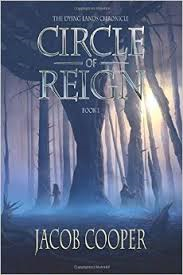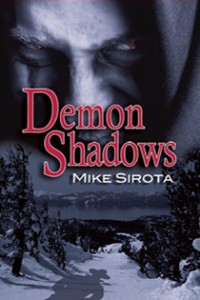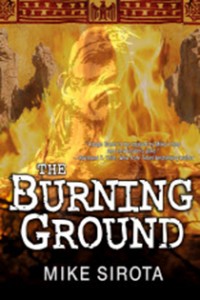 Here is another post that came through time via the Wayback Machine. Useful writing tips never become outdated. But first, I’d like to brag about a couple of my writers, both of whom I’ve heard from in the past week. They must’ve listened well to some of the things I told them when we worked together on their books.
Here is another post that came through time via the Wayback Machine. Useful writing tips never become outdated. But first, I’d like to brag about a couple of my writers, both of whom I’ve heard from in the past week. They must’ve listened well to some of the things I told them when we worked together on their books.
Jacob Cooper, author of the epic fantasy, Circle of Reign, took the Gold prize, an IPPY award, in the Fantasy category from the Independent Publisher Book Awards competition. (Read more about Jacob and his novel on this blog: “Guest Post: Circle of Reign.”)
 Begoña Echeverria’s novel, The Hammer of Witches, received an outstanding review from the Historical Novel Society. It read, in part, “In addition to being a riveting story, this book is important as a cultural resource in that it preserves many of the traditional stories of the Basque people about witches. It also serves as a reminder that such blind hatred is possible, even today, if we allow ourselves to be swayed to anger, without deep thought and consideration for the humanity of all involved. Highly recommended.” Visit their website for the full review. (Read more about Begoña and her book on this blog: “Guest Post: The Hammer of Witches.”)
Begoña Echeverria’s novel, The Hammer of Witches, received an outstanding review from the Historical Novel Society. It read, in part, “In addition to being a riveting story, this book is important as a cultural resource in that it preserves many of the traditional stories of the Basque people about witches. It also serves as a reminder that such blind hatred is possible, even today, if we allow ourselves to be swayed to anger, without deep thought and consideration for the humanity of all involved. Highly recommended.” Visit their website for the full review. (Read more about Begoña and her book on this blog: “Guest Post: The Hammer of Witches.”)
WATCH YOUR LANGUAGE!
To some writers, “outline” is a dirty word (much like “synopsis”). To others, it is an indispensable tool in helping to craft their stories. As for me—well, during my multiple writing careers I have traveled down both roads. Let me explain.
During my first writing career, when I cranked out over a dozen sword & planet and sword & sorcery novels, I gave absolutely no thought to outlining any of them. I sat down at the typewriter/computer and just let it flow. It worked, I guess. The stories weren’t too bad, and they got published. (The writing sucked—but that’s a whole different story.) Outline? We don’t need no stinkin’ outline.
 In my second writing career, when I had a real job and other responsibilities, I decided to use my limited time to pitch partial projects to editors. That meant a chapter or two, and—oh no!—an outline for the rest of the story. Just the thought of it intimidated me. But it had to be done, so after writing the first two chapters (about fifty pages) of what would become my novel Demon Shadows (later published by Bantam Books), I agonized over a six-page outline but finally got it done. I figured that would kill any chance of the story seeing the light of day.
In my second writing career, when I had a real job and other responsibilities, I decided to use my limited time to pitch partial projects to editors. That meant a chapter or two, and—oh no!—an outline for the rest of the story. Just the thought of it intimidated me. But it had to be done, so after writing the first two chapters (about fifty pages) of what would become my novel Demon Shadows (later published by Bantam Books), I agonized over a six-page outline but finally got it done. I figured that would kill any chance of the story seeing the light of day.
Months later, an editor at Bantam called and offered me a contract for the story. Great! Now all I had to do was write the rest of the book. Given the time that had passed, I’d all but forgotten about the outline. I re-read it, and guess what—I realized that the story was already written! Yeah, okay, I had to flesh out the six pages into over three hundred, but that wasn’t hard at all. The outline kept me on track, and even with a full-time job I got the story done in a few months. (I wrote and sold a few more proposals after that—all with outlines.)
“HARRR, THEY’RE MORE LIKE GUIDELINES THAN RULES”
Now, did I follow the outline to the letter? No way, because at some point the story took a different turn, and something that I’d written in the outline just didn’t make sense. So I went in another direction, letting the story dictate where I should go, and it worked. Captain Barbossa in the Pirates of the Caribbean movies, talking about the Pirate Code, explained that they were guidelines, not rules. The same holds true for an outline. Just because you wrote it doesn’t mean you have to use it verbatim.
 I can’t recall exactly what didn’t work in my outline for Demon Shadows; that was a long, long time ago. But I have a more recent example that will illustrate the value of an outline from a couple of perspectives. My third writing career began early in 2011 with the publication of Fire Dance, which had been written for Bantam many years ago but never got published. Afterward, I decided to actually write a new book. Recalling that I had done many proposals back in my second career, I went through the archives (a file cabinet in my attic) and found the perfect follow-up, a Native American-themed ghost story titled The Burning Ground. Way back, I’d written the first forty-plus pages, and even more important—a seventeen-page outline! Wow, another story already “completed.” It was like pushing the “Easy” button at Staples; only took a few months.
I can’t recall exactly what didn’t work in my outline for Demon Shadows; that was a long, long time ago. But I have a more recent example that will illustrate the value of an outline from a couple of perspectives. My third writing career began early in 2011 with the publication of Fire Dance, which had been written for Bantam many years ago but never got published. Afterward, I decided to actually write a new book. Recalling that I had done many proposals back in my second career, I went through the archives (a file cabinet in my attic) and found the perfect follow-up, a Native American-themed ghost story titled The Burning Ground. Way back, I’d written the first forty-plus pages, and even more important—a seventeen-page outline! Wow, another story already “completed.” It was like pushing the “Easy” button at Staples; only took a few months.
 But does that mean the entire outline worked? Again, no way. The first nine pages did, but on page ten I would have been at great risk of repetition had I gone with what I’d mapped out. And a few pages later I had created a scene that would have destroyed all of the empathy I’d worked at building for my ghostly characters, so that also took another direction. To tell the truth, most of the second half of the outline contained roadblocks, though I managed to turn them into little more than speed bumps.
But does that mean the entire outline worked? Again, no way. The first nine pages did, but on page ten I would have been at great risk of repetition had I gone with what I’d mapped out. And a few pages later I had created a scene that would have destroyed all of the empathy I’d worked at building for my ghostly characters, so that also took another direction. To tell the truth, most of the second half of the outline contained roadblocks, though I managed to turn them into little more than speed bumps.
So have I become a supporter of the outline? You got it. To again paraphrase the wisdom of Captain Barbossa: “Outlines are more like guidelines than rules.” Harrr!

Mike! Thanks so much for the honorable mention. I’m excited to work with you. Next book is a bear, but finally coming together. I totally agree with you on outlining! I used to staunchly proclaim, “I’m a discovery writer, darn it!” But Circle of Reign took 5 years to write so… Then, Altar of Influence took under a year because I outlined it. And, just like your experiences, I do deviate from the outline as I (dare I say) “discover” other elements about the story not in the outline, but find myself coming back after that deviation. The writing picks up so much once the outline is done and you go much faster. For short stories, though, I just write. No outline. Have a new one in production right now, actually, and it’s a great exercise for me!
My pleasure, Jacob. I’m glad outlining helped you with the second book. It just makes the work go so much easier. Looking forward to your next opus.
Hi, Mike. As you pointed out, we don’t have to be a slave to the outline. After all, this IS art, and we have to be open to inspiration, and so many times that inspiration comes from the discoveries we make as we work our way through that outline. The discoveries I’d made rendered the last quarter of my outline useless. But I needed the same ending. Hmmm… How does the the existing material shape a new final act? What have I discovered about the characters and the situation? A moment or three of reflection, a good pen and a notebook, and like magic (that cursed, unpredictable muse of inspiration again?), a new outline for the final act flowed out of the nib and onto the page. And then back to full tilt writing. Guidelines, indeed, but more valuable than any treasure in the Black Pearl’s hold.
Avast, matey, great insights from you, as always. There is no Fogg engulfing your creativity. 🙂
Once I made it through that first novel and four complete revisions, I found a path that works for me and saves me months of time. I don’t exactly outline, but I do create what I call a Timeline for each novel. My Timeline consists of a loose Narrative Structure using the 7 elements of story our brain wants to see ( Once upon a time, until one day, and every since that day, etc) – based on a wonderful little book called Invisible Ink. Then within this structure I add in all the plot points and character arcs that must happen to progress the story forward and bring it to the proper ending. It’s a guideline to keep me on track and not wandering off in the wrong direction, yet leaves it open for change and inspiration along the way in the journey.
Sounds like that works for you, Indy, which is the most important thing. Call it what you will. I like it!
I like the Pirates of the Caribbean reference!
Harrr, Chris, it do fit, don’t it!